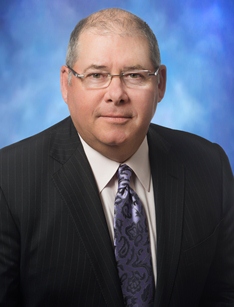 Let's go back to the beginning. How did you enter the insurance business, and what would you consider some of your career highlights to date?
Let's go back to the beginning. How did you enter the insurance business, and what would you consider some of your career highlights to date?
I began my insurance career as a property underwriting trainee for Allianz Insurance Companies.
In 1985 I was recruited by McAlear & Associates, a Grand Rapids, Mich.-based wholesale broker, to establish a property operation in their Kansas City offices. Led by Charles A. McAlear, McAlear & Associates was the founding organization for the National Association of Professional Surplus lines Offices (NAPSLO).
After a successful career with McAlear & Associates, I struck out on my own and founded Westrope, in my hometown of Kansas City Mo., in 1992.
Westrope has grown dramatically since its founding, expanding from one location with eight employees to employing over 195 professional in nine locations spread over three companies. Westrope has been built from the ground up organically and is now one of the leading independent wholesale brokerages in the United States. Westrope finished its 21st year in business with close to $600M in revenues and is recognized as “Best of Class.”
My approach to success has been combining a balanced blend of psychology and organizational development to insurance sales. This approach has created a culture driven by excellence, is fiercely competitive and guided by highly ethical values. Westrope is excited to build upon our successes and will continue to thrive in the future.
What is it that still appeals to you about operating in the surplus lines sector, and what are some of the specific areas of expertise you've developed at your own firm?
The ability to be creative in finding solutions for our clients. The specialty market is creative and works very quickly. Over the years we have developed specialty expertise in Construction, Agricultural business, Transportation, Workers' Comp and Life Sciences to complement our expertise in the Property & Casualty and Professional Executive Liability.
Previously, you said you felt the greatest challenges to surplus lines in 2013 lay in the standard market's ability to enforce discipline in pricing, terms and conditions, but that discipline has not always prevailed. Do you think it has this year? What are the results that you've seen?
The overall insurance market responds to economic and financial conditions. We have seen better discipline as returns on investment income continue to be difficult to achieve and combined ratios have lingered at levels that are higher than most would like. Reserve redundancy is beginning to climb again, however, and the industry remains overcapitalized. Many companies are sitting on cash that needs to be deployed. I think we will see some downward pressure on rates in the coming year. Reinsurance treaty renewals seem to be holding steady or in some cases are coming down. All of these factors speak to carriers' appetites, and that drives what is available in the specialty markets.
Which risks have you seen gravitate toward the excess & surplus market this year, and why have they shifted there (or shifted back, in some cases)?
While I don't have any specific accounts or classes, I can say that all of our specialties are experiencing double-digit growth.
How do you feel the Wholesaler Value Campaign has progressed thus far, and what work still needs to be done in communicating the value wholesalers bring to the table? How do you articulate that message?
When I began my career, the E&S market represented around 3% of the entire commercial insurance marketplace. In the last 30 years we have seen that percentage climb to the low to mid-teens. While that may not sound like a lot, its means that this industry is a $30 billion-plus industry. As a result, firms have become more highly professional, sophisticated and certainly more diverse than ever before. Insureds and their retail brokers are increasingly looking to the Wholesale community to provide innovative coverage and structure as a way to get to the best possible outcome. While I think the industry has lagged behind in communicating their overall value to the marketplace, we are certainly making good strides. In this era of complete transparency I feel it is vital continue to message that value proposition. NAPSLO has been and will continue to be the voice of advocacy for this market segment and must continue to tell the story.
Want to continue reading?
Become a Free PropertyCasualty360 Digital Reader
Your access to unlimited PropertyCasualty360 content isn’t changing.
Once you are an ALM digital member, you’ll receive:
- Breaking insurance news and analysis, on-site and via our newsletters and custom alerts
- Weekly Insurance Speak podcast featuring exclusive interviews with industry leaders
- Educational webcasts, white papers, and ebooks from industry thought leaders
- Critical converage of the employee benefits and financial advisory markets on our other ALM sites, BenefitsPRO and ThinkAdvisor
Already have an account? Sign In Now
© 2024 ALM Global, LLC, All Rights Reserved. Request academic re-use from www.copyright.com. All other uses, submit a request to [email protected]. For more information visit Asset & Logo Licensing.








